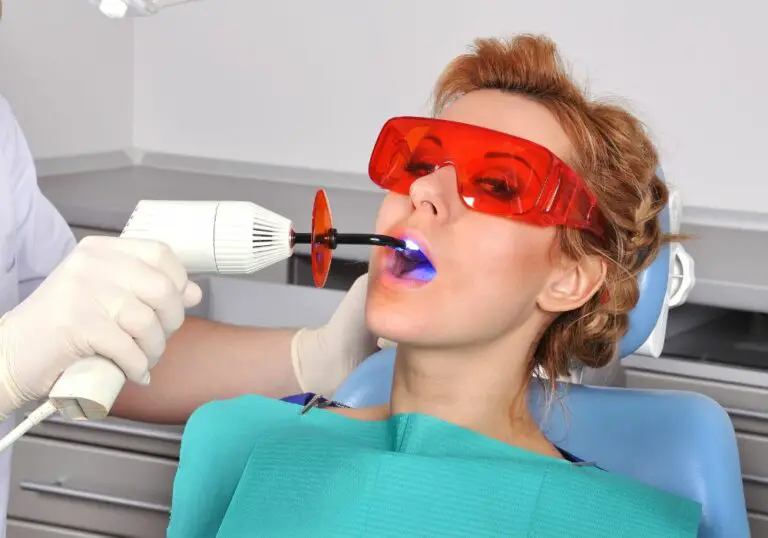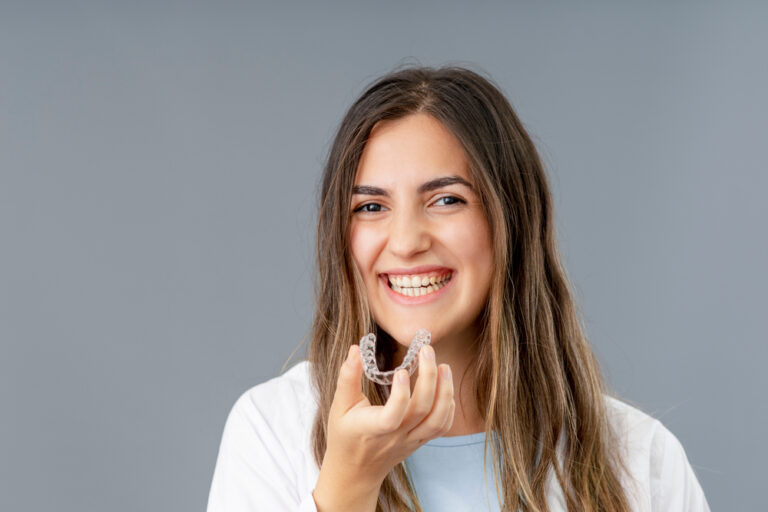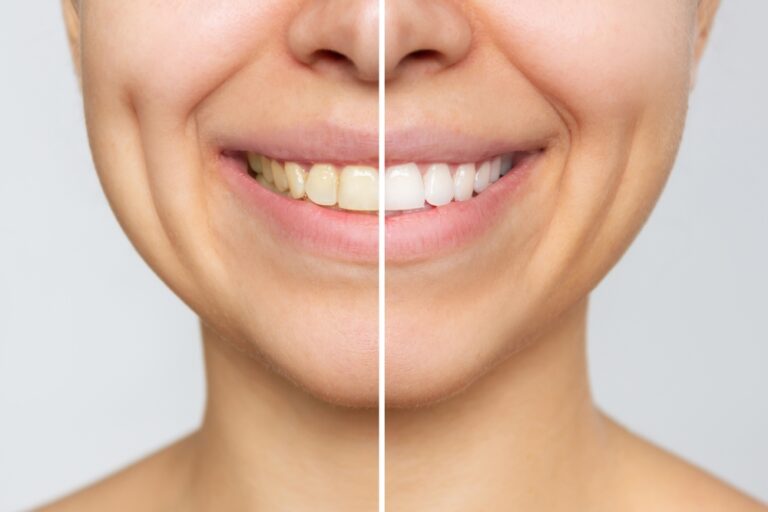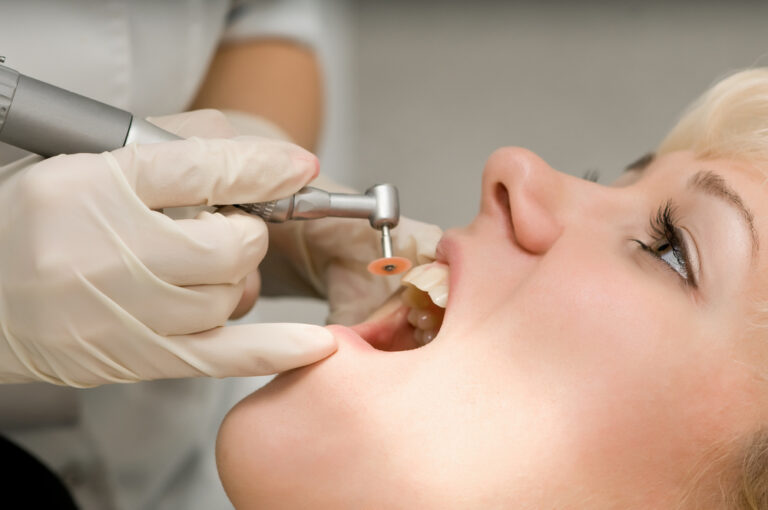Yellowing of teeth at the gum line can be a cause of concern for many people. It is a common issue that affects people of all ages. While yellow teeth can be a result of poor oral hygiene, there are several other factors that can contribute to this problem.
Understanding tooth anatomy is essential to identify the causes of yellow teeth at the gum line. The outer layer of the tooth, known as the enamel, is naturally white. However, the layer beneath the enamel, called the dentin, is naturally yellow. When the enamel wears away or becomes thin, the yellow dentin becomes more visible, resulting in yellow teeth. In this article, we will explore the various causes of yellow teeth at the gum line and ways to prevent and treat this condition.
Key Takeaways
- Yellowing of teeth at the gum line can be caused by various factors, including poor oral hygiene, dental conditions, and medications.
- Regular brushing, flossing, and dental check-ups can help prevent yellowing of teeth at the gum line.
- Treatment options for yellow teeth at the gum line include professional teeth whitening, dental bonding, and veneers.
Understanding Tooth Anatomy
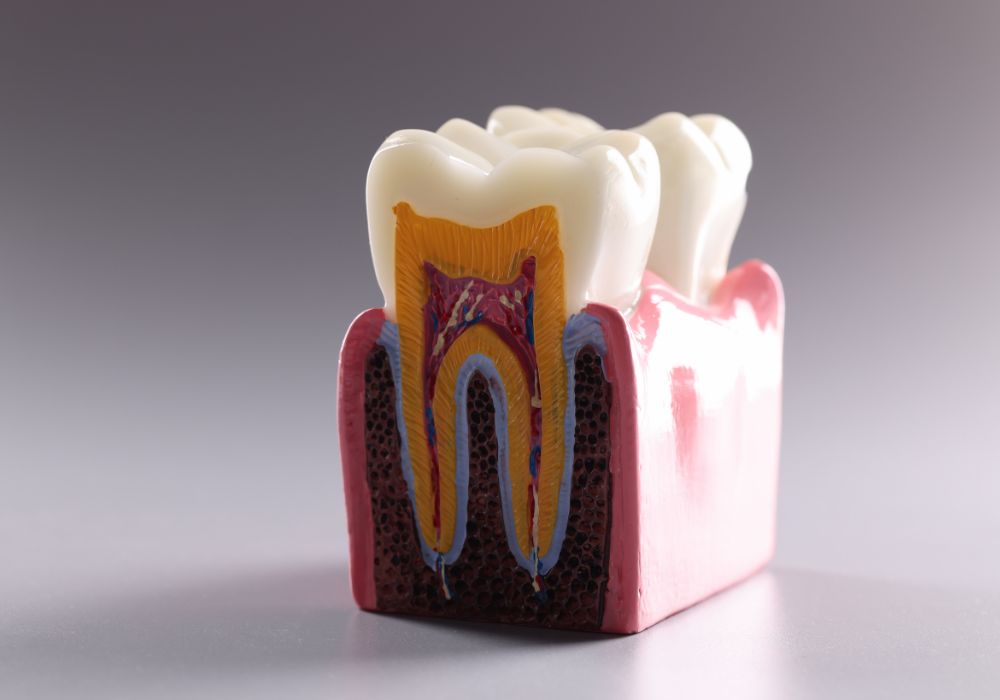
Enamel
The outermost layer of a tooth is called the enamel. It is a hard, protective coating that covers the crown of the tooth. Enamel is the hardest substance in the human body, and it helps to protect the tooth from decay and damage. Enamel is also translucent, which means that the color of the tooth’s underlying dentin can show through.
Dentin
Dentin is the layer of the tooth that lies beneath the enamel. It is softer than enamel and has a yellowish color. Dentin contains tiny tubes that run from the center of the tooth to the outer surface. These tubes contain nerve endings that can be sensitive to hot, cold, or sweet foods and drinks. When the enamel is worn away, the dentin can become exposed, leading to tooth sensitivity.
Gum Line
The gum line is the area where the tooth meets the gums. It is an important area to keep clean because it is where plaque and tartar can build up, leading to gum disease and tooth decay. When plaque and tartar build up along the gum line, they can cause the teeth to appear yellow or brown.
To keep your teeth healthy and white, it is important to brush and floss regularly and to see your dentist for regular cleanings and check-ups. If you have yellow teeth at the gum line, it may be a sign of tartar buildup, which can be removed by a dental professional.
Causes of Yellow Teeth at the Gum Line
There are several reasons why teeth may appear yellow along the gum line. Some of the most common causes include poor oral hygiene, smoking and tobacco use, dietary choices, and aging.
Poor Oral Hygiene
Failing to maintain proper oral hygiene can lead to the buildup of plaque and tartar along the gum line, which can cause teeth to appear yellow. Plaque is a sticky film of bacteria that forms on teeth throughout the day. If not removed through regular brushing and flossing, it can harden into tartar, which can only be removed by a dental professional.
Smoking and Tobacco Use
Smoking and other forms of tobacco use can cause teeth to become yellow, particularly along the gum line. Tobacco products contain tar and other chemicals that can stain teeth and cause them to become discolored over time. Additionally, smoking and tobacco use can increase the risk of gum disease, which can cause further discoloration and damage to the teeth and gums.
Dietary Choices
Certain foods and drinks can also contribute to yellowing of the teeth at the gum line. Dark-colored beverages, such as coffee, tea, and red wine, can stain teeth over time. Acidic foods and drinks, such as citrus fruits and soda, can also erode tooth enamel and cause the underlying yellow dentin to become more visible.
Aging
As we age, the enamel on our teeth naturally wears away, which can cause the underlying yellow dentin to become more visible. Additionally, the roots of our teeth may become exposed as our gums recede, which can also cause teeth to appear yellow along the gum line.
Overall, maintaining good oral hygiene and avoiding tobacco use can help prevent yellowing of the teeth at the gum line. Additionally, limiting consumption of dark-colored and acidic foods and drinks can also help keep teeth looking their best.
Dental Conditions Leading to Yellowing
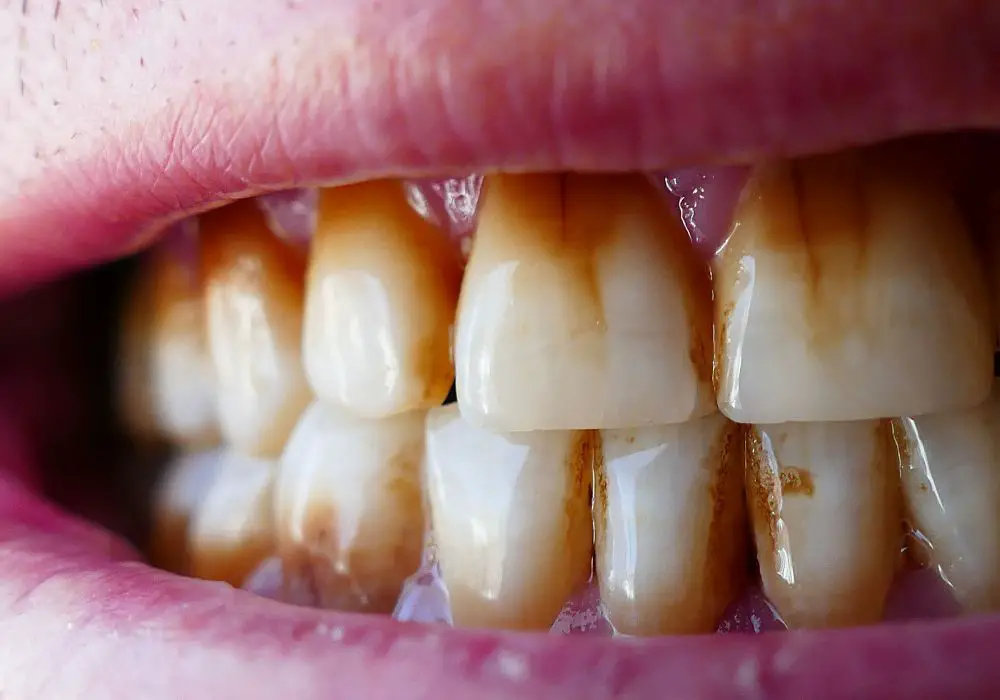
There are several dental conditions that can lead to yellowing of teeth at the gum line. These conditions include gum disease and tooth decay.
Gum Disease
Gum disease, also known as periodontal disease, is a common dental problem that affects the gums and bones that support the teeth. It occurs when plaque and tartar build up on the teeth and gums, leading to inflammation and infection. The bacteria that cause gum disease can also cause the gums to recede, exposing the yellowish roots of the teeth.
If left untreated, gum disease can lead to tooth loss and other serious health problems. Some of the common symptoms of gum disease include bleeding gums, bad breath, and yellowing of teeth at the gum line.
Tooth Decay
Tooth decay is another dental condition that can cause yellowing of teeth at the gum line. It occurs when the bacteria in plaque and tartar produce acid that erodes the tooth enamel, leading to cavities. As the decay progresses, it can reach the dentin layer of the tooth, which is yellow in color.
Tooth decay can be prevented by practicing good oral hygiene, such as brushing and flossing regularly and avoiding sugary and acidic foods and drinks. If left untreated, tooth decay can lead to tooth loss and other serious dental problems.
In conclusion, gum disease and tooth decay are two common dental conditions that can cause yellowing of teeth at the gum line. It is important to practice good oral hygiene and visit your dentist regularly to prevent and treat these conditions.
Effects of Medications and Treatments
Certain medications and treatments can have an impact on the color of your teeth. Here are some of the most common ones:
- Antibiotics: Tetracycline and doxycycline are antibiotics that can cause teeth discoloration in children whose teeth are still developing. These antibiotics can cause a grayish hue on the teeth, which can be difficult to remove with regular brushing.
- Chemotherapy and radiation: Cancer treatments can cause teeth discoloration as well as dry mouth, which can lead to tooth decay and gum disease.
- Antihistamines: These medications can cause dry mouth, which can lead to tooth decay and gum disease.
- Antidepressants: Some antidepressants can cause dry mouth, which can lead to tooth decay and gum disease.
- Blood pressure medications: Calcium channel blockers and angiotensin-converting enzyme (ACE) inhibitors can cause gum overgrowth, which can make the teeth appear shorter and discolored.
- Iron supplements: Iron supplements can cause teeth discoloration, especially when taken in high doses.
If you are taking any of these medications, talk to your doctor or dentist about the potential side effects and what you can do to minimize them. In some cases, your doctor may be able to adjust your dosage or switch you to a different medication. Additionally, maintaining good oral hygiene habits, such as brushing and flossing regularly, can help prevent teeth discoloration and other dental issues.
Prevention Strategies
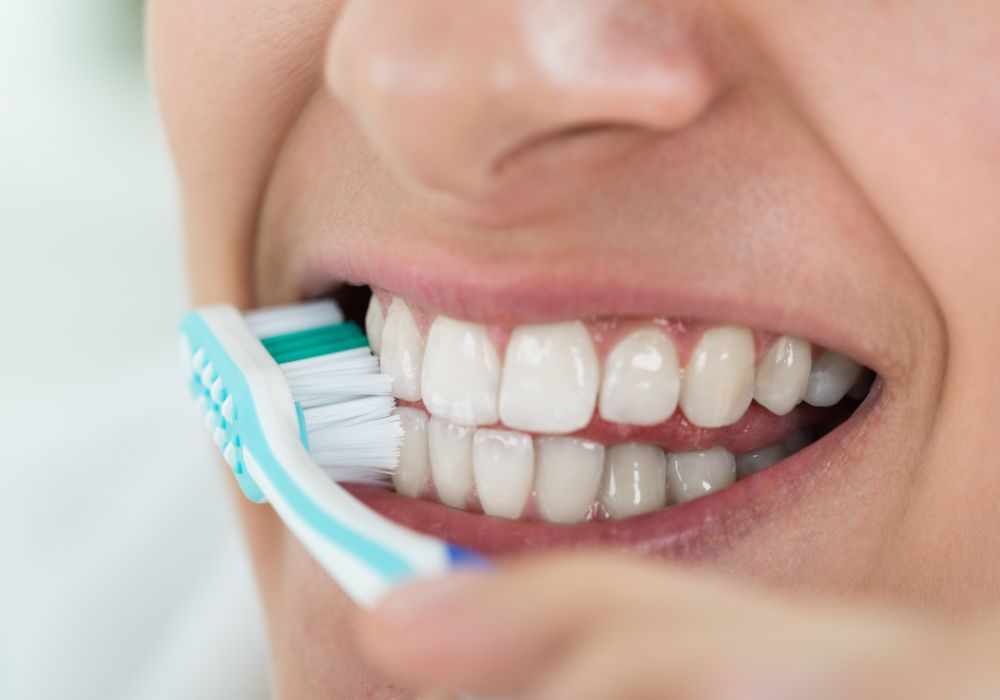
Proper Brushing Techniques
One of the most effective ways to prevent yellow teeth at the gum line is to brush your teeth properly. Use a soft-bristled brush and fluoride toothpaste to clean your teeth twice a day, for at least two minutes each time. Make sure to brush all surfaces of your teeth, including the gum line and the back of your teeth. Avoid brushing too hard, as this can damage your enamel and cause gum recession.
Flossing Regularly
Flossing is another important step to prevent yellow teeth at the gum line. Floss at least once a day to remove plaque and food particles that your toothbrush can’t reach. When flossing, be gentle and avoid snapping the floss against your gums, as this can cause bleeding and damage to your gums.
Regular Dental Check-ups
Regular dental check-ups are crucial to maintaining good oral health and preventing yellow teeth at the gum line. Your dentist can detect early signs of tooth decay and gum disease, which can cause yellowing of the teeth. They can also provide professional teeth cleaning to remove plaque and tartar buildup, which can cause yellowing of the teeth.
By following these prevention strategies, you can maintain healthy teeth and prevent yellowing at the gum line. Remember to brush your teeth properly, floss regularly, and visit your dentist for regular check-ups and cleanings.
Treatment Options
If you are concerned about yellow teeth at the gum line, there are several treatment options available. Here are some of the most common:
Professional Cleaning
A professional dental cleaning can remove surface stains and tartar buildup that contribute to yellowing teeth. During a cleaning, your dentist or dental hygienist will use special tools to remove plaque and tartar from your teeth and polish them to a shine. This can help to improve the appearance of your teeth and prevent future staining.
Teeth Whitening
Teeth whitening is another popular option for treating yellow teeth. There are many over-the-counter whitening products available, such as whitening toothpaste, strips, and gels. However, for more severe staining, professional teeth whitening may be necessary. Your dentist can provide in-office whitening treatments or custom-fitted trays that you can use at home.
Dental Veneers
Dental veneers are thin, custom-made shells that are bonded to the front of your teeth to improve their appearance. They can be used to cover up yellowing teeth, as well as other cosmetic issues like chips, cracks, and gaps. While veneers are more expensive than other treatment options, they can provide a dramatic improvement in the appearance of your teeth.
It’s important to talk to your dentist about which treatment option is right for you, based on the severity of your yellowing and your overall dental health. With the right treatment, you can achieve a brighter, more confident smile.
Frequently Asked Questions
How can I whiten my teeth along my gum line?
There are several ways to whiten your teeth along the gum line. You can use whitening toothpaste, whitening strips, or a whitening gel that you apply to your teeth. You can also try natural remedies like baking soda, hydrogen peroxide, or apple cider vinegar. However, it’s important to consult with your dentist before trying any whitening treatment to ensure it’s safe for your teeth.
Why is my teeth yellow at the edge?
Yellowing of teeth at the edge can be caused by several factors, including poor oral hygiene, smoking, drinking coffee or tea, and aging. It can also be a sign of tartar buildup or tooth decay. If you’re concerned about the yellowing of your teeth, it’s best to consult with your dentist to determine the cause and possible treatment options.
Why are my teeth not whitening near the gum line?
Teeth may not whiten near the gum line due to the buildup of plaque and tartar, which can be difficult to remove with regular brushing. It may also be due to the natural color of your teeth, which can be affected by genetics, diet, and lifestyle factors. If you’re having trouble whitening your teeth near the gum line, it’s best to consult with your dentist for advice on the best treatment options.
How to remove yellow stains from teeth naturally?
There are several natural remedies that can help remove yellow stains from teeth, including brushing with baking soda, using hydrogen peroxide, or rubbing the inside of a banana peel on your teeth. However, it’s important to use these remedies with caution and to consult with your dentist before trying any new treatment.
Yellow stuff on teeth won’t come off?
If yellow stuff on your teeth won’t come off, it may be due to the buildup of plaque and tartar, which can be difficult to remove with regular brushing. It’s best to consult with your dentist for a professional cleaning to remove the buildup and prevent further damage to your teeth and gums.
How do I get rid of the yellow on my gum line?
To get rid of the yellow on your gum line, it’s important to maintain good oral hygiene by brushing and flossing regularly. You can also try using a whitening toothpaste or a whitening gel that you apply to your teeth. However, it’s best to consult with your dentist for advice on the best treatment options for your specific needs.


